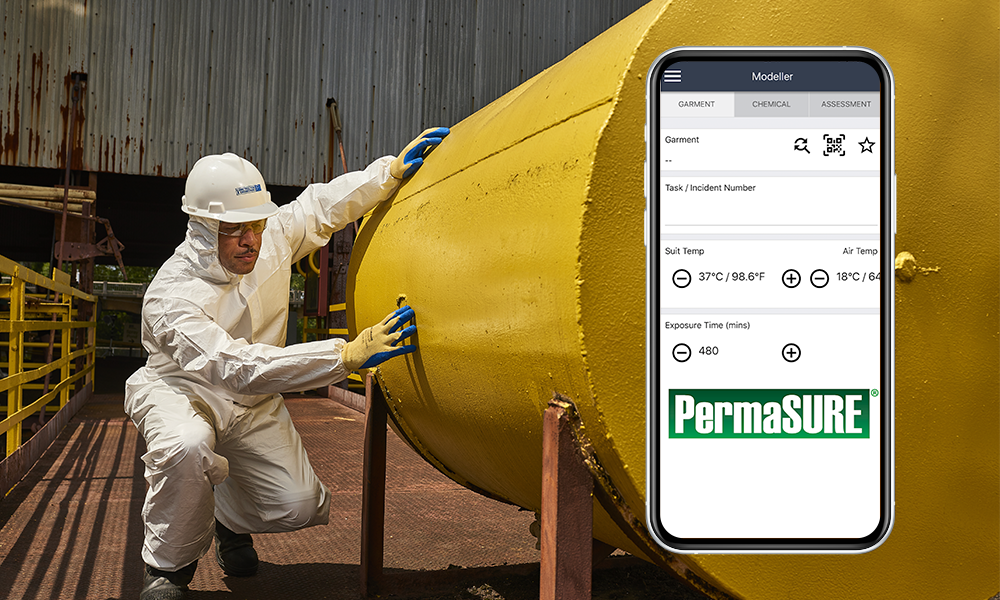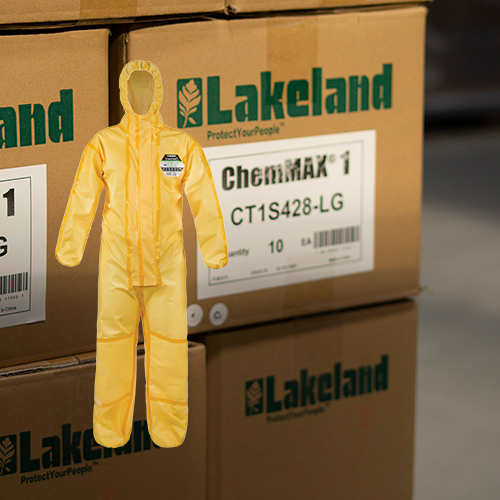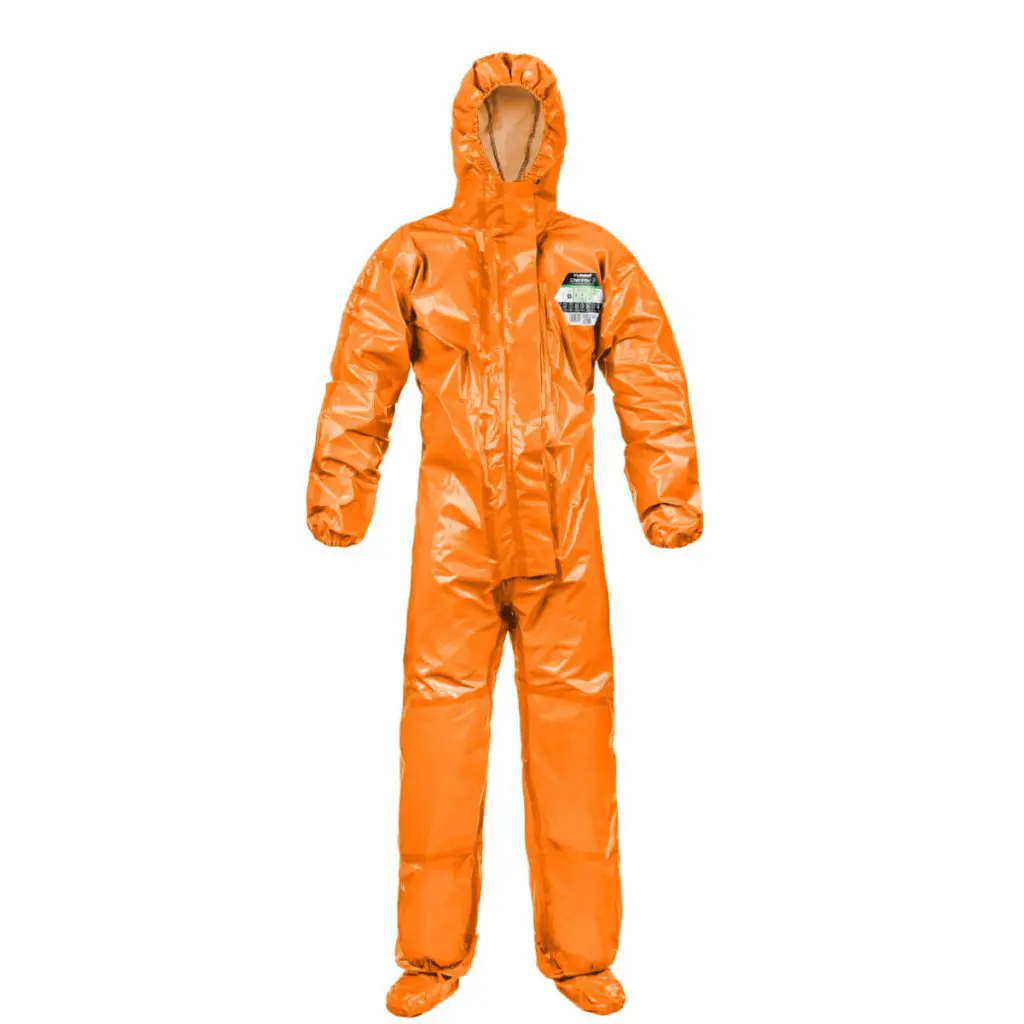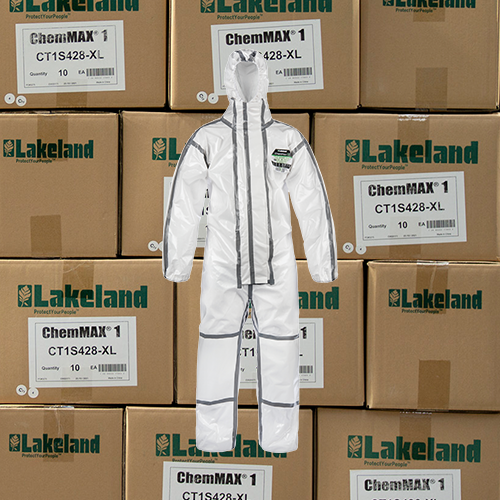4 things you need to know about wearing Chemical Protection
4 Key Considerations
1. Which Chemicals you are working with.
2. Which Hazard/Spray Type you will come into contact with.
3. What environmental factors you are facing.
4. The amount of safe working time you have.
Why do you need to know?
When it comes to the PPE required for working with Hazardous Chemicals, the CE and UKCA Certifications cannot be solely relied on to ensure the safety of the wearer, unlike many basic products such as gloves or face masks for lower risk tasks.
When it comes to Hazardous Chemicals, the hazards and risks are stacked. It is of primary importance for wearers and PPE procurement officers to be aware of all the factors involved, which can affect the safe working of PPE such as chemical suits, which is what we will discuss in this post.
This knowledge ensures safety AND can save you Money!
Not only does a deeper understanding for which Chemical Suit is needed ensure safety and optimal comfort for the wearer, there are cost benefits to reap too! Procuring chemical suits with unnecessarily high protection than what is needed means higher PPE spend and can result in less wearer comfort. A simple consideration for each of the following areas below will allow you to select the correct PPE needed.
Which Chemicals you are working with?
Different chemicals have different levels of toxicity, varying reactions to environmental factors such as heat, potential to cause cancer and differing abilities to cause harm in lower quantities.
Sites with multiple chemicals must assess the different risks of each individual chemical to ensure safety, as well as the safe-use time of their chosen chemical suits. The chemical is what ultimately dictates the type of fabric that your protective suit needs to be, probably the most critical factor.

There’s an App for that!
To make it easy, we stock a range of Lakeland Chemmax suits which can be used in conjunction with the Permasure App to calculate your safe-use time. Leaving the guess work to… (well no-one, we don’t do guessing here at Hazchem). The app allows you to select your model of Chemmax Suit, followed by the chemical you are working with from a database of over 4,000 different chemicals, and assess your safe-use time for you.
If Permasure deems it unsafe for this model of Chemical suit to be used with this chemical, it will inform you which level of protection you will need.
Which Hazard/Spray Type you will come into contact with?
Once you have established the chemical in use, you then need to consider ‘spray type’ – simply ‘in what form is the chemical going come into contact with me?’ This could
be as a gas, vapour, shower spray, Jet spray, airborne solid particulates or chemical splash. Each of these comes under a different EN Standard for Chemical Protection, which are what Chemical suits are certified with.
For example, the Chemmax 3 Suit is certified to EN 14605, and therefore protects against jet spray of hazardous liquids. Some products (e.g. the Interceptor Plus by Lakeland) may only be certified to EN 943-1 and only protect against vapours and gases, and would not protect the wearer from the sprays or splash of liquid.
As you can see, knowing the hazard type is also important. See below for the Chemical Protection Standards, with the Lakeland Chemical Suit Recommendations for each one:
TYPE 1: EN 943-1
Protection against hazardous vapours and gases.
(Don’t worry there is no Type 2, it was removed in 2015)
TYPE 3: EN 14603
Protection against jet sprays of hazardous liquids.
TYPE 4: EN 14605
Protection against sprays of hazardous liquids
TYPE 5: EN 13982
Protection against airborne solid particulates.
TYPE 6: EN 13034
Protection against Chemical splash
At Hazchem, we have chosen to stock the Chemmax 1 and 3, which offer protection against Type 3,4,5 and 6.
ChemMAX 3 Plus Type 3,4,5 And 6 Coverall C/w Attached Feet (hazchemsafety.com)
ChemMAX Type 3,4,5 & 6 Disposable Coverall – Hazmat Suit UK (hazchemsafety.com)
What environmental factors you are facing?The choice of garment also depends on the task in hand. For example, for those tasks which require kneeling or crawling, chemical suits with reinforced knee are an advantage, such as the Chemmax 3.
There are many environmental factors to consider such as:
- Room Temperature
- Room Ventilation
- Proximity of Moving Vehicles
- Presence of heat or flames.
- Explosive atmospheres.
These factors influence the choice of garment fabric and design, and is also a important consideration to make when working with chemicals.
The amount of safe working time you have
Calculated with the Permasure app as mentioned above, your safe-use time dictates how long you can wear your Chemmax chemical suit whilst maintaining full protection. When your safe-use time is reached the chemical suit must be disposed of and replaced.
Using a chemical suit past the safe-use time no longer guarantees the wearer safety. The fabric can no longer withstand chemical permeation, leaving the skin open to absorb the chemicals, which could lead to both short and long term health effects, including cancer.
Chemical spray and vapour are often not seen by the naked eye and cannot be differentiated from natural bodily fluids such as sweat, which is expected to also be present on the wearer when working in these kinds of chemical suits. There is no way to detect your contact with chemicals safely, other than the safe-use time.
Conclusion
Even with superior protection like Chemmax, wearers still need to consider all the above. Wearing chemical protection past the safe-use time can cause serious harm, as well not knowing what chemicals you are working with or not taking into consideration temperature of the working space.
These interchanging elements are part of what makes working with chemicals so dangerous, the risk could differ from one day to the next, so it is important to constantly assess, making use of the Permasure App, and advice from experts in Safety.
We have barely even scratched the surface on Chemical Protection, but we have selected the most crucial points for you to know. If you have any questions please get in touch or visit the useful resources below for in-depth chemical protection information.



